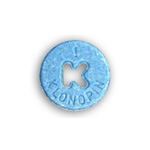Amoxil (Amoxicillin)
Nowadays, Amoxil is often taken to treat those bacterial infections that are susceptible to its effects, including bronchitis, tonsils, pneumonia, laryngitis, gonorrhea and others. Before patients start this ...
Antibiotics are those medications that are taken to kill harmful bacteria, and they belong to antimicrobials. Basically, they are those chemicals that are derived from or produced by special microorganisms, such as fungi and bacteria, and the first one was discovered almost one century ago by Fleming. Now, antibiotics are some of the most common drugs taken by patients to treat a range of bacterial infections.
Nowadays, Amoxil is often taken to treat those bacterial infections that are susceptible to its effects, including bronchitis, tonsils, pneumonia, laryngitis, gonorrhea and others. Before patients start this ...
These days patients often take Cipro when they have certain infections of their bones, skin, airways, lungs and joints, if they are caused by some susceptible bacteria. This medicine is also taken ...
There are many doctors who prescribe their patients to take Doxycycline to treat a range of bacterial infections, including acne and malaria, and certain skin conditions. Basically, this medicine ...
Flagyl contains metronidazole as its active ingredient, and many patients take it to treat a number of infections. Basically, it belongs to a group of meds called antibiotics and nitroimidazoles, and it acts ...
Doctors often prescribe their patients to take Levaquin if they need to treat different bacterial infections. Basically, this medicine belongs to a group of meds called quinolone antibiotics, and it acts by ...
Neurontin belongs to a group of anticonvulsants. Gabapentine, as an active ingredient of the treatment, produces a powerful anti-epileptic effect. The component influences the central nervous system ...
It’s possible to find more than 100 antibiotics available in the modern market, but most of them can be categorized as certain classes, including the following:
It’s true that most antibiotics have 2 names, generic and brand, and they are always based on their chemical class or structure. Besides, each of them is effective only for a specific type of bacterial or other infection, so that only qualified doctors can determine the best one according to the needs of their patients. Some people may have certain allergic reactions to antibiotics, and they are not allowed to use them as their infection treatment.
Needless to say, these meds play an important role in terms of modern medicine, but most bacteria have an ability to develop their resistance. When people hear about antibiotic-resistant bacteria, they should understand that these microorganisms can’t be killed by widely used antibiotics. For example, when harmful bacteria are exposed to the same drug on a regular basis, they start changing to avoid being affected by this medication.
There are different methods and ways used by these microorganisms to become resistant to antibiotics. They have their interesting internal mechanism of altering their structure to make meds work no longer, and they may also develop certain ways to neutralize inactivate antibiotics. Another important detail is that bacteria may transfer gene codes for antibiotic resistance between each other, and this is what makes the ones that have never been exposed to such medications resistant to them.
This problem with antibiotic resistance gets worse when these drugs are taken to treat those medical conditions in which they have zero effectiveness, or when they are used as some prophylaxis, not treatment. As an example, they are not effective against different infections caused by viruses. Resistance to existing antibiotics is a growing and serious issue as some infectious ailments are becoming more and more complicated to treat, because resistant bacteria don’t respond to antibiotics and keep causing infections. Some of them can be treated by stronger meds, while others are hard to treat even by experimental drugs.
© Copyright 2009 Health Canada Pharmacy

















